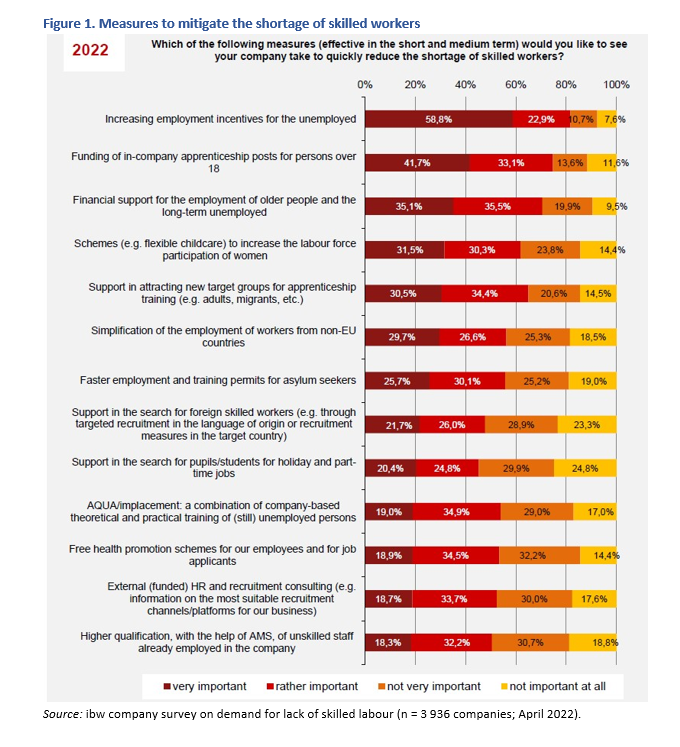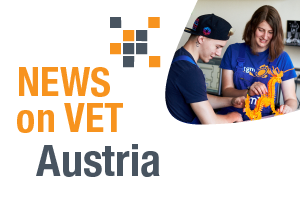A survey of 4 000 companies in all industries shows that 73% of companies suffer from a ‘very severe’ or ‘severe’ shortage of skilled labour. The fact that companies are having increasing problems finding employees with specific qualifications raises new questions for the vocational education and training (VET) sector.
Since 2018, ibw Austria – Research & Development in VET has conducted an annual survey of around 4 000 companies on behalf of the Austrian Federal Economic Chamber (WKO) on the demand for skilled workers (Skilled Labour Radar), and combined it with evaluations of secondary statistical labour market data. In the aftermath of the COVID-19 crisis and Russia’s attack on Ukraine, the April 2022 survey confirms the multi-year trend of a growing shortage of skilled workers.
All industries are affected
Overall, 87% of the companies questioned across all industries said they were affected by the current shortage of skilled workers, 73% of them very or rather severely. The shortage is experienced particularly strongly in tourism (81% very or rather severely), in construction (81%), in the manufacture of wood products (76%), in transport (76%) and in the artisanal and technical sector as a whole.
Extrapolating the vacancies mentioned in the survey to all WKO member companies shows the demand for skilled workers at 272 000 for April 2022 – a new all-time high. Compared to the 2021 survey (May/June 2021), the demand increased by 23%, and by as much as 31% compared to the last survey before the COVID pandemic began in April 2019.
Consequences for VET
All previous surveys confirmed that companies have the greatest difficulties in finding people with apprenticeship qualifications. In 2022, 59% of respondents frequently experienced problems finding employees at this qualification level. Consequently, 40% of the companies surveyed would also be willing to train more apprentices if they found sufficiently qualified and interested young people. This underlines the great importance of dual VET in meeting the demand for skilled labour.
It is also striking that, in a multi-year comparison, there is also an increase in the problem of recruiting either people without specific qualifications but with professional experience (45% frequently experience difficulties) or without professional experience (25%). This can be interpreted as an indication of a growing general labour shortage that goes beyond the shortage of skilled workers. But it also raises the question of how the initial and continuing vocational education and training sectors can respond to this unspecified demand in terms of content and structure.
What needs to be done?
From a company perspective, measures to decrease the shortage of skilled workers primarily include opening up new target groups for apprenticeship training, and employment incentives for the unemployed, older workers and women that are intended to help meet the demand for skilled workers (Figure 1).

Sources and further information
- Unternehmensbefragung zum Fachkräftebedarf/-mangel 2022 [company survey on the needs for skilled workers/shortage of skilled workers 2022]
- Fachkräftebedarf/-mangel in Österreich 2022 [needs for skilled workers/shortage of skilled workers in Austria 2022] EN / DE
- WKO Skilled Labour Radar
| Please cite this news item as: ReferNet Austria; Cedefop (2022). Austria: company survey confirms severe shortage of skilled workers. National news on VET |
